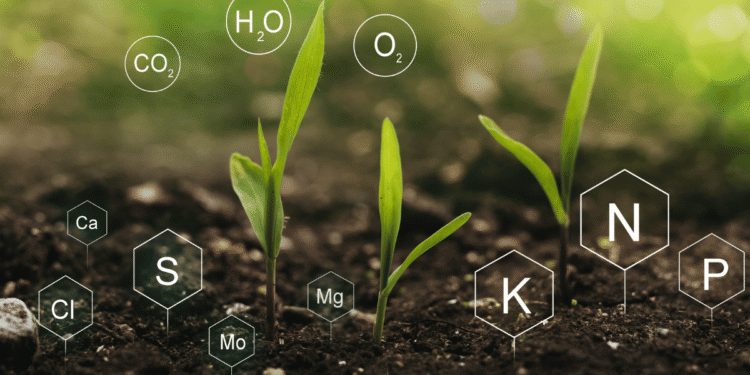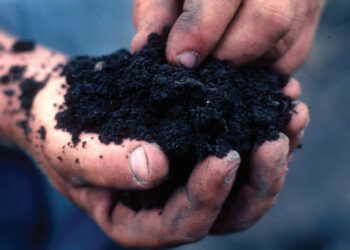Soil health is a critical component of sustainable agriculture and is essential for maintaining productive and profitable farm operations. Soil health is impacted by a variety of factors, including the addition of nutrients and the application of chemicals.
Precision nutrient management is a strategy that can help farmers maintain and improve soil health, while also reducing the costs and environmental impact of fertilizers and other soil amendments. We will also explore the latest technologies and techniques used in precision nutrient management and the benefits they provide to farmers and the environment.
What is Precision Nutrient Management?
Precision nutrient management is a strategy that involves the use of precision agriculture technologies and techniques to apply fertilizers and other soil amendments in a targeted and precise manner. This approach is designed to optimize the use of these inputs and to minimize their environmental impact.

Precision nutrient management involves the use of soil mapping and analysis, as well as the use of sensors and other monitoring devices to gather data on soil conditions and nutrient requirements. This information is then used to develop a nutrient management plan that is tailored to the specific needs of each field.
Benefits of Precision Nutrient Management
Precision nutrient management offers a number of benefits to farmers, including improved soil health, increased crop yields, and reduced fertilizer costs. By applying fertilizers and other inputs in a targeted and precise manner, farmers are able to ensure that their crops receive the exact nutrients they need to thrive while minimizing the amount of unused fertilizer that can harm the environment.
In addition to these benefits, precision nutrient management also offers benefits to the environment. By reducing the amount of unused fertilizer that leaches into groundwater and waterways, precision nutrient management helps to protect water quality and reduce the risk of environmental contamination.
Precision nutrient management also helps to reduce greenhouse gas emissions by reducing the need for frequent fertilizer applications, which can be energy-intensive. By optimizing the use of fertilizer inputs, farmers are able to maintain or even improve soil health while reducing their environmental impact.
Technologies and Techniques Used in Precision Nutrient Management
There are a variety of technologies and techniques used in precision nutrient management, including soil mapping and analysis, remote sensing, and precision agriculture equipment.
Soil mapping and analysis is a critical component of precision nutrient management. This process involves collecting and analyzing soil samples to determine the nutrient content and pH of the soil, as well as the presence of any soilborne diseases or pests. This information is then used to develop a nutrient management plan that is tailored to the specific needs of each field.
Remote sensing technologies, such as drones and satellites, are also used in precision nutrient management. These technologies can be used to gather information on crop growth and soil conditions, allowing farmers to make informed decisions about fertilizer applications and other soil amendments.
Precision agriculture equipment, such as precision planters and applicators, is also an important component of precision nutrient management. This equipment is designed to apply fertilizers and other inputs in a precise and targeted manner, ensuring that crops receive the exact nutrients they need to thrive.
The Future of Precision Nutrient Management
Precision nutrient management is a rapidly evolving field, and the latest technologies and techniques are continuously being developed to improve the efficiency and accuracy of this approach. In the future, precision nutrient management is likely to become even more important as farmers seek to optimize their operations and reduce their environmental impact.

One area of future development for precision nutrient management is the use of machine learning and artificial intelligence. These technologies have the potential to provide farmers with even more precise recommendations for fertilizer applications and other soil amendments, based on real-time data and predictive modeling. This could help farmers to make even more informed decisions about nutrient management and soil health, leading to even greater benefits for both the environment and their bottom line.
Another area of potential growth for precision nutrient management is the use of precision livestock management. This approach involves the use of sensors and monitoring devices to track the health and behavior of livestock, providing farmers with valuable insights into their nutrition and well-being. By combining precision livestock management with precision nutrient management, farmers can create a more integrated and sustainable approach to agriculture that benefits both their animals and the environment.
Conclusion
Precision nutrient management is a critical component of sustainable agriculture and is essential for maintaining soil health and promoting productive and profitable farm operations. With the use of precision agriculture technologies and techniques, farmers are able to apply fertilizers and other soil amendments in a targeted and precise manner, optimizing their use and minimizing their environmental impact.
As precision nutrient management continues to evolve, farmers can look forward to even more benefits, including improved yields, reduced costs, and greater environmental sustainability. By embracing this approach and utilizing the latest technologies, farmers can help ensure the long-term health and productivity of their soil and their operations.










